Portugal is the westernmost country of continental Europe. Most of this small country lies on the Iberian Peninsula. Spain, also on the Iberian Peninsula, borders Portugal to the north and east. The Atlantic Ocean borders continental Portugal to the west and south. The Azores and Madeira island groups, both in the Atlantic, are part of Portugal. Lisbon is Portugal’s capital and largest city.

Most Portuguese people live in cities and towns near the coast. They work mainly in the service and manufacturing industries. Tourism is extremely important to Portugal’s economy. The country’s wines are popular around the world.
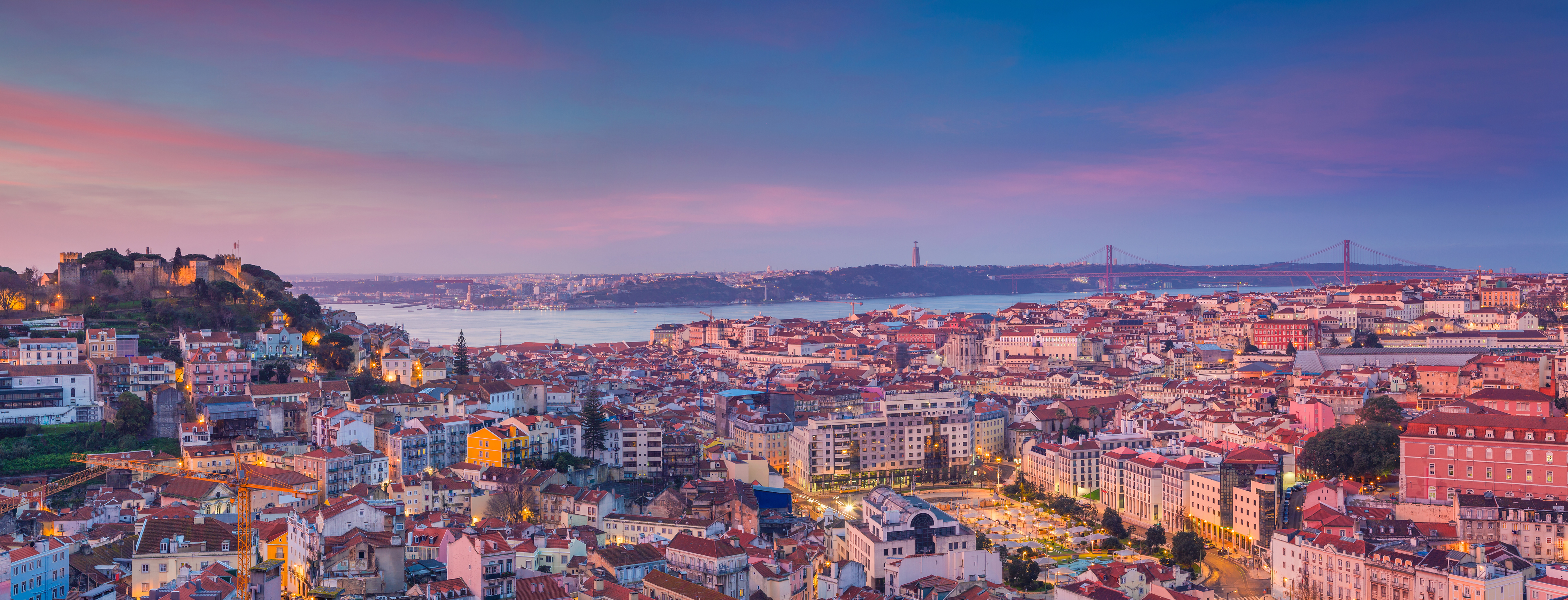
During the 1400’s and 1500’s, daring Portuguese explorers launched the great age of European exploration. Bartolomeu Dias commanded the first European voyage around the Cape of Good Hope at the southern tip of Africa. Vasco da Gama sailed around the cape and discovered a sea route to Asia. Pedro Álvares Cabral sailed to what is now Brazil. These expeditions and other voyages led to the establishment of a vast Portuguese empire. The empire included colonies in Africa, Asia, and South America.
Portugal’s power and influence began to weaken in the late 1500’s. Still, the country kept much of its empire for more than 400 years. Eventually, in the 1960’s and 1970’s, Portugal withdrew from all but one of its remaining overseas territories. The last remaining territory was Macau, a tiny area on the southern coast of China. Portugal returned control of Macau to China in 1999.
The 1970’s brought about a major political change within Portugal. Dictators had ruled the country from 1926 to 1974. During this period, personal freedom was limited, and opposition to the Portuguese government was crushed. In 1974, a group of young military officers staged a revolution and overthrew the country’s dictatorship. Portugal adopted a democratic system of government in 1976.
Government
Portugal is a republic. Its Constitution, adopted in 1976, grants the people such rights as freedom of speech, religion, and the press. Portuguese citizens who are 18 years old or older may vote in elections.
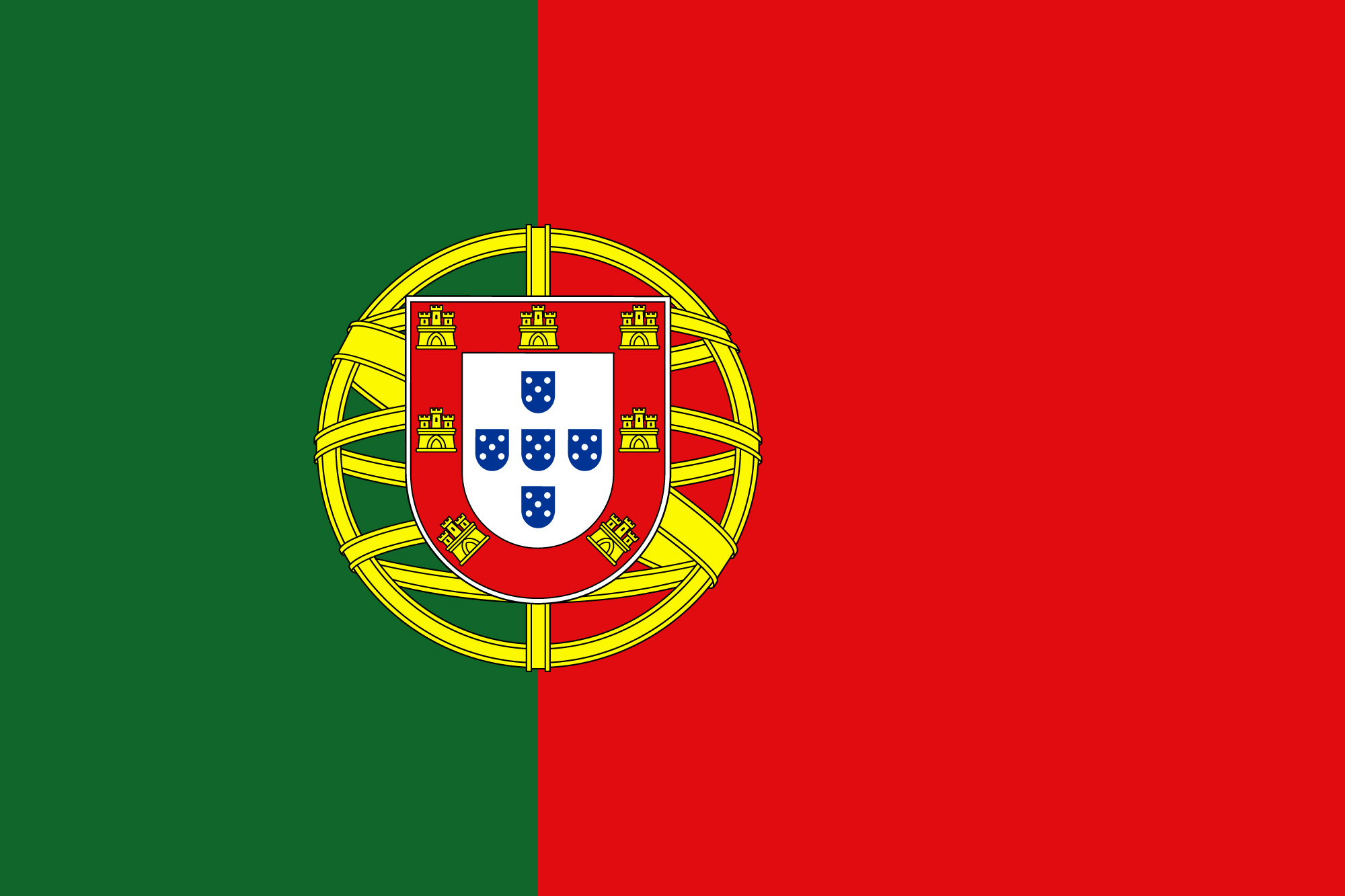
Portugal's national anthem
National government.
A parliament called the Assembly of the Republic makes Portugal’s laws. It has 230 members. The members of the Assembly are elected by the people and serve four-year terms.
The people elect a president to a five-year term. The president may serve no more than two consecutive terms in office.
The president appoints a prime minister, who heads the government. The person chosen for the office is usually the leader of the political party that has the most seats in the parliament. The prime minister chooses members of the cabinet, called the Council of Ministers. The prime minister and the Council of Ministers plan government policy and carry out the operations of the government.
Local government.
Portugal is divided into 18 administrative districts. Cities and towns within the districts have their own administration and legislative assemblies. The Azores and Madeira are autonomous (self-governing) regions. Each has its own executive government that is responsible to its legislative assembly.
Politics.
Portugal has many political parties. Among the largest and most powerful are the Social Democratic Party (PSD) and the Socialist Party (PS). Portugal’s other important political organizations include the Democratic and Social Center-Popular Party (CDS-PP), the Left Bloc (BE), and the Communist-led Unitary Democratic Coalition (CDU). The CDS-PP is commonly known as the People’s Party. The conservative, nationalist Chega party became a force in the nation’s politics during the 2020’s.
Courts.
The Supreme Court of Portugal is the highest court of appeal in the country. Portugal also has lower courts of appeal and a variety of district and local courts.
Armed forces.
Portugal has an army, navy, and air force. Military service is voluntary.
People
Population and ancestry.
Lisbon, in southwestern Portugal, is the country’s capital and largest city. It is also the country’s economic, political, and cultural center. Lisbon has one of the world’s finest natural harbors. Porto is Portugal’s only other large city. Porto is the major economic center of northern Portugal. About 40 percent of the Portuguese people live in or near Lisbon or Porto. See Lisbon; Porto. 
People called Iberians were the first known inhabitants of what is now Portugal. They lived there before the beginning of recorded history—about 5,000 years ago. Through the centuries, various other peoples came to Portugal. They included Phoenicians, Carthaginians, Celts, Greeks, Romans, Visigoths, and North African Muslims.
Today’s Portuguese people are a mixture of all the country’s ethnic and nationality groups. Since the mid-1960’s, thousands of people from Portugal’s former African colonies have moved to Portugal. They form an important minority group. Other groups include people from Brazil, eastern Europe, and South Asia. Since the 1990’s, many citizens of other European Union (EU) countries have made their homes in Portugal.
Way of life.
Portugal’s cities, especially Lisbon and Porto, are growing rapidly. Each year, a large number of rural people move to urban areas to find jobs in such industries as manufacturing and construction, or other city activities. In Portugal’s cities, buildings that are hundreds of years old stand alongside modern apartment and office buildings.
Many rural Portuguese live in small fishing or farming villages. Fishing villages line the country’s coast. Some people brave the rugged waters of the Atlantic Ocean in small boats to catch fish. Other family members may perform such tasks as cleaning fish and mending nets. However, the number of people who fish for a living has declined sharply since the 1980’s. 
Portuguese farmers raise a variety of crops. However, they are best known for their fine grapes that are used to make wine. People in many parts of the world enjoy such Portuguese wines as port and vinho verde. Portuguese winemakers use mostly native grape varieties and employ the latest winemaking techniques.
The Portuguese people value family and try to maintain close family ties. Villagers who move to cities tend to keep in close touch with their relatives back home.
The Portuguese generally wear clothing similar to that worn across Europe and North America. In rural areas, many people wear colorful and intricate traditional costumes for special occasions.
The chief foods of Portugal include fish, various kinds of meat, rice, and potatoes. Salted cod called bacalhau is used in numerous recipes. Salads and locally grown fruits and vegetables also are popular.
The people of Portugal enjoy such recreational activities as playing and watching sports, going to the beach, and traveling. Bullfighting remains popular with many Portuguese. Unlike Spanish and Latin American bullfighters, Portuguese bullfighters do not kill the bulls. Doing so is illegal.
Language.
Portuguese is the official language of Portugal, and the only language widely used. Like Spanish, Portuguese is one of the Romance languages that developed from Latin. See Portuguese language.
Religion.
Most Portuguese people who practice a religion are Roman Catholics. The country also has small groups of Jews, Muslims, and Protestants. Until the early 1900’s, the Roman Catholic Church was, in effect, part of Portugal’s national government. The church and state were separated in 1911.
Catholicism remains important to many Portuguese, particularly in such areas as education and social life. Traditional Catholic celebrations, processions, and pilgrimages are important activities for many people. Each year, thousands of people make a pilgrimage to the Portuguese town of Fátima. In 1917, the Virgin Mary reportedly appeared there to three children who were tending sheep (see Fátima, Our Lady of).
Education.
Portugal’s educational system has made great strides since the 1970’s. A network of elementary and high schools extends throughout the country. By law, Portuguese children must attend school between the ages of 6 and 18. Almost all Portuguese people can read and write.
Portugal has many public and private universities, most of which were opened after the 1974 revolution. The largest one is Lisbon University. The oldest is the University of Coimbra, which dates back to 1290.
The arts.
The golden age of Portuguese art began in the 1400’s, about the same time that the country became a world power. It lasted until the 1600’s. The art of the golden age was influenced by the Catholic Church, the royalty, and the Portuguese love of the sea.
During the golden age, architects built beautiful churches, and artists filled them with religious paintings and sculptures. These architects and artists developed a style, called Manueline, noted for its elaborate use of decoration. The style is named for King Manuel I, who ruled from 1495 to 1521 and sponsored many artists. A famous example of Manueline art is a church window frame at Tomar. The frame is shaped to resemble such marine items as coral, seaweed, and ship nets and ropes. Nuno Gonçalves, the best-known artist of the golden age, gained fame for his paintings of saints, kings, and princes. 
The most famous literary work of the golden age was Os Lusiadas by Luís de Camões. First published in 1572, this long epic poem praises Portugal’s historical accomplishments and heroes.
After about 1800, religious art gave way to art that reflected everyday life. The Portuguese became known for their novels, poetry, and political cartoons. Famous Portuguese writers of the late 1800’s and early 1900’s include the novelist José Maria de Eça de Queirós and the poet Fernando Pessoa. In 1998, the Portuguese novelist José Saramago won the Nobel Prize for literature. Famous Portuguese architects since the 1900’s have included Álvaro Siza and Eduardo Souto de Moura. Loading the player...
Portuguese folk music
The Portuguese also have a wealth of folk art. Their folk songs range from lively dance music called chulas and viras, to sad songs known as fados, sung to the accompaniment of a guitar. Portuguese handmade pottery, lace, and linen are prized by people in many countries.
Land and climate
Most of continental Portugal is relatively flat and lies at a low altitude above sea level. But there are mountain ranges in the northeastern, central, and southwestern parts of the country. Portugal’s islands include the peaks of large underwater volcanic mountain chains.
Land regions.
Portugal can be divided into four main land regions: (1) the Coastal Plains, (2) the Northern Tablelands, (3) the Central Range, and (4) the Southern Tablelands.
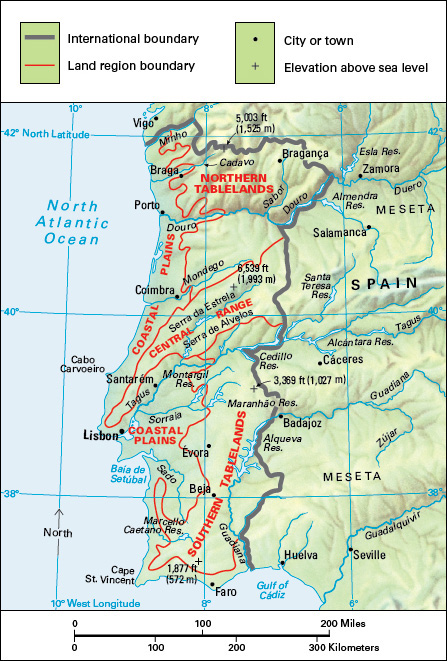
The Coastal Plains are flatlands that lie along and near the western and southern coasts. In some areas, the region is narrow, but in other areas it extends into the center of the country. The Coastal Plains support numerous farm and fishing villages. Portugal’s main cities, Lisbon and Porto, lie on the Atlantic coast in the region.
The Northern Tablelands, Central Range, and Southern Tablelands are extensions of the Meseta, a huge plateau that covers most of the Iberian Peninsula. These three regions consist mainly of plains broken by mountain ranges. Farmers grow crops and raise livestock on the plains. The mountains yield a high percentage of Portugal’s minerals.
Portugal’s highest peak is Ponta do Pico, on Pico Island in the Azores. It rises 7,713 feet (2,351 meters) above sea level. The highest mountains in continental Portugal are in the Serra da Estrela mountain range, in the Central Range region. Peaks there rise more than 6,000 feet (1,800 meters) above sea level. The elevation at Torre, the highest place in the range, is 6,539 feet (1,993 meters).
Rivers.
Two major rivers, the Douro and the Tagus, cross Portugal from east to west. The Douro, in the north, empties into the Atlantic Ocean at Porto. The Tagus, in the center of the country, flows into the ocean at Lisbon. The Guadiana, another important river, forms part of Portugal’s boundary with Spain in the southeast.
The Tagus River divides Portugal in several ways. The area north of the river is much cooler than the area south of it. The northern area also is more densely populated. Farms in the north tend to be small, but the south has many huge farms. In addition, the people north of the Tagus are generally more conservative politically than those south of the river. See Tagus River.
Climate.
Portugal has a mild climate. The country receives much sunshine, especially in the south. Vacationers flock to resorts in the south to enjoy the warm, sunny climate. In spring and summer, Portugal’s weather is generally warm and dry, with little or no rain. In fall and winter, the weather is cool, and heavy rains often fall on much of the country. Southern Portugal receives no snow, but parts of the north receive a little. Snow generally covers the highest peaks of the Serra da Estrela mountain range for several months each year.
Average temperatures in Portugal range from about 70 °F (21 °C) in July to about 50 °F (10 °C) in January. Average annual precipitation totals about 55 inches (140 centimeters) in parts of the inland north, but only about 20 inches (51 centimeters) in the coastal south.
Economy
Portugal ranks as one of the poorest countries in Western Europe. Since the 1960’s, however, the country has generally experienced economic growth. Until the mid-1900’s, Portugal’s economy was based chiefly on agriculture and fishing. Today, service industries and manufacturing play a more important role in the country’s economy.
Natural resources.
Portugal has some valuable mineral resources, but for the most part, these resources have not been well developed. The most important developed mineral resource is building stone, which is found throughout the country. Decorative marble is a valuable type of building stone quarried in Portugal. Portugal also mines copper, silver, tin, tungsten, and zinc.
Forests cover about a third of Portugal. Large pine forests stand in the north. Central and southern Portugal have forests of cork oak trees. Portugal is the world’s leading cork producer.
Portugal’s rivers, especially the Douro and Tagus, provide hydroelectric power. The Atlantic Ocean is another important resource. Many Portuguese have long depended on its fish for their livelihoods. In addition, winds from the Atlantic Ocean are harnessed to generate electric power.
Service industries.
Banking and financial services, education, government, and health care are important service industries in Portugal. Hotels, restaurants, and shops benefit from the millions of tourists who visit the country each year. Most of these tourists come from France, Germany, Spain, the United Kingdom, and other European countries.
Taken together, service industries account for about 75 percent of Portugal’s economic production and about 70 percent of its workers.
Manufacturing.
Traditionally, the production of textiles was the leading manufacturing activity in Portugal. Today, manufactured goods include cars, chemicals, food products, high-technology equipment, machinery, paper products, and refined petroleum. Factories also produce ceramics, clothing, cork products, and shoes. 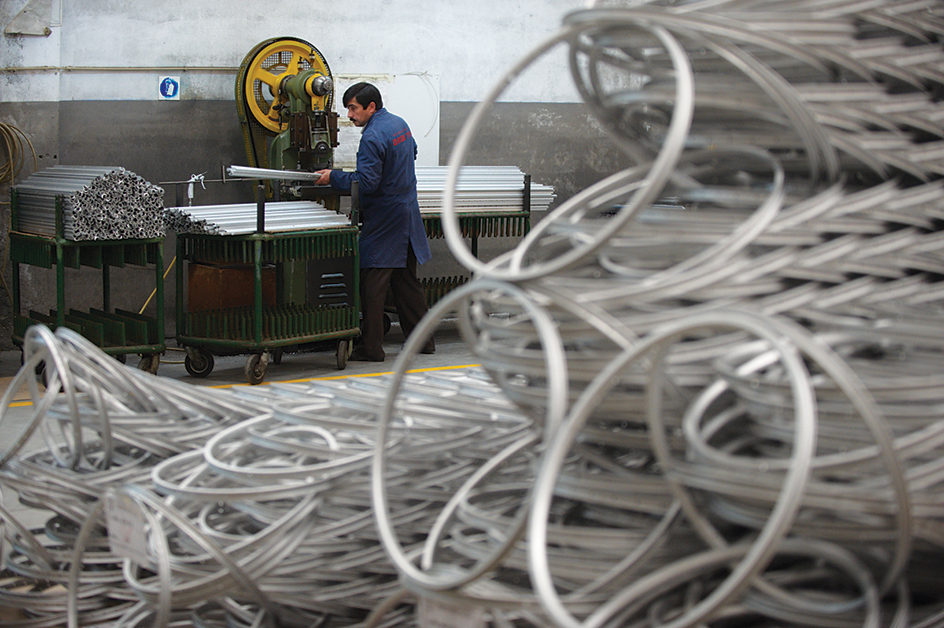
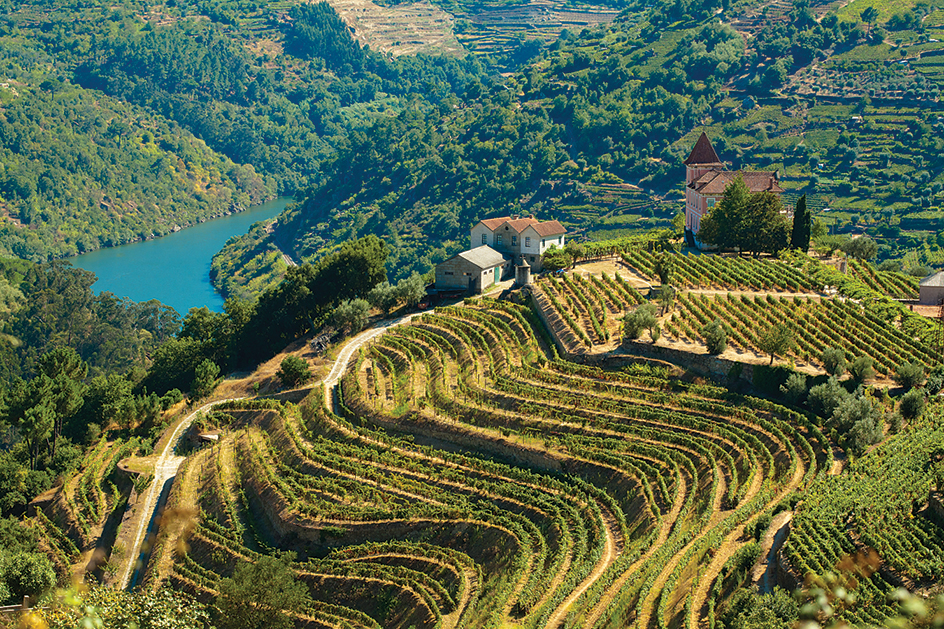
Agriculture and fishing.
Wine grapes are grown in the river valleys that cut across Portugal. The vineyards of the Douro Valley yield grapes for port wine, which is named for the city of Porto. Grapes from Madeira are used for Madeira wine. Other crops grown in Portugal include apples, corn, olives, oranges, pears, potatoes, rice, tomatoes, and wheat. Farmers also raise beef and dairy cattle, chickens, hogs, and sheep. Fishing crews catch cod, mackerels, sardines, tuna, and many other kinds of fish.
Most crop farms in Portugal are small. The majority of farmers own the land they work. Some Portuguese farmers still use old-fashioned methods and equipment, but the use of modern methods and equipment is more common. Organic farming, which does not use synthetic chemicals, has gained ground.
Foreign trade.
Portugal’s major exports include clothing, food products, machinery, motor vehicles, and petroleum products. The country imports large amounts of food products, iron and steel, machinery, petroleum and petroleum products, pharmaceuticals (medicinal drugs), and transportation equipment.
Portugal is a member of the European Union (EU), which works for economic and political cooperation among its member nations. Spain, also a member of the EU, is Portugal’s chief trading partner. Portugal also trades heavily with other EU members, including Belgium, France, Germany, Italy, and the Netherlands. Many Portuguese exports go to countries outside the EU, notably the United Kingdom, the United States, and countries in South America and Africa.
Transportation.
The national government owns and operates the main railroad system in Portugal. Lisbon Airport is Portugal’s main international airport. Portugal also has international airports in Faro and Porto and in the Azores and Madeira Island territories. Lisbon; Matosinhos, near Porto; and Sines have major ports.
In Portuguese cities, automobiles, buses, electric streetcars, and metro trains provide much of the transportation. Outside of and between urban areas, people travel by airplane, automobile, bus, and train. A network of highways connects Portugal’s major cities.
Communication.
Radio and television stations operate under both private and state ownership. Portugal has several daily newspapers, including Correio da Manhã of Lisbon and Jornal de Notícias of Porto. Internet usage has increased rapidly since the mid-1990’s.
History
Early inhabitants.
Prehistoric people probably lived in what is now Portugal over 100,000 years ago. The first known inhabitants of the area were called Iberians. These people lived on the Iberian Peninsula, in what are now Portugal and Spain, at least 5,000 years ago.
A number of groups invaded the Iberian Peninsula. Phoenicians from the eastern shore of the Mediterranean Sea established settlements there in the 1000’s B.C. Celts from northern Europe settled in the area during the 900’s B.C., and Greeks arrived in the 600’s B.C. Invaders from the powerful North African city of Carthage took control of much of the Iberian Peninsula in the 400’s B.C.
Roman rule.
In 201 B.C., the mighty Roman Empire defeated Carthage in the Second Punic War (see Punic Wars). As part of the peace settlement, Rome gained the right to the Iberian Peninsula. Little by little, the Romans conquered the peoples on the peninsula. They completed their conquest of what is now Portugal by about the time of Jesus Christ.
The Romans did much to build up the area that is now Portugal. They established cities and a network of roads. Latin, the language used by the Romans, became the basis of the Portuguese language. The Roman Empire adopted Christianity as its official religion in the late A.D. 300’s. Under Roman rule, Portugal began developing into a Christian land.
The Romans called the Portuguese portion of the Iberian Peninsula Lusitania. They named the port and city at present-day Porto Portus Cale. These words became the basis for the name Portugal.
Visigoths and Muslims.
Germanic tribes that had entered the West Roman Empire began to form kingdoms in the A.D. 400’s. The empire collapsed in 476. The Visigoths, one of the tribes, conquered the Iberian Peninsula. The Visigoths were Christians, and Portugal remained a Christian land under their rule.
In the early 700’s, North African Muslims (followers of the Islamic religion) conquered most of what are now Portugal and Spain. They constructed Arab-style buildings, introduced new crops, and improved education and the system of roads. However, Muslim domination over the Iberian Peninsula was not complete. Christians formed a series of small kingdoms in the north and gradually increased their territory. The Crusades, religious wars aimed at returning Palestine to Christian control, began in the late 1090’s. The Crusades boosted Christian opposition to Muslim rule in the Iberian Peninsula. By the mid-1200’s, Christians had driven the Muslims from Portugal and from most of Spain.
Founding the Portuguese nation.
The French nobleman Henry of Burgundy had joined the Iberian Christians in their fight against the Muslims. In 1094, the Christian King Alfonso VI of Castile and Leon (now part of Spain) rewarded Henry with the counties of Porto and Coimbra, in what is now northern Portugal. Alfonso named Henry the Count of Portugal.
Henry of Burgundy’s son, Afonso Henriques, won many victories over the Muslims. About 1140, he took the title of king of Portugal. In 1143, he won recognition of Portugal as a kingdom from the ruler of Castile and Leon.
In 1385, a new royal line, the House of Aviz, came to the Portuguese throne. King John I became the first Aviz king. His armies defeated Castilian forces and helped guarantee the future independence of Portugal from its powerful neighbor to the east. King John also made an alliance with England. This alliance, still in force, is the oldest existing political alliance in Europe.
The age of exploration.
Even before the 1400’s, Portuguese traders and fishermen had sailed far from home into the Atlantic Ocean. By 1400, the Portuguese had gained much knowledge about the sea. They had also mastered navigational skills and the ability to build ships capable of making long voyages. 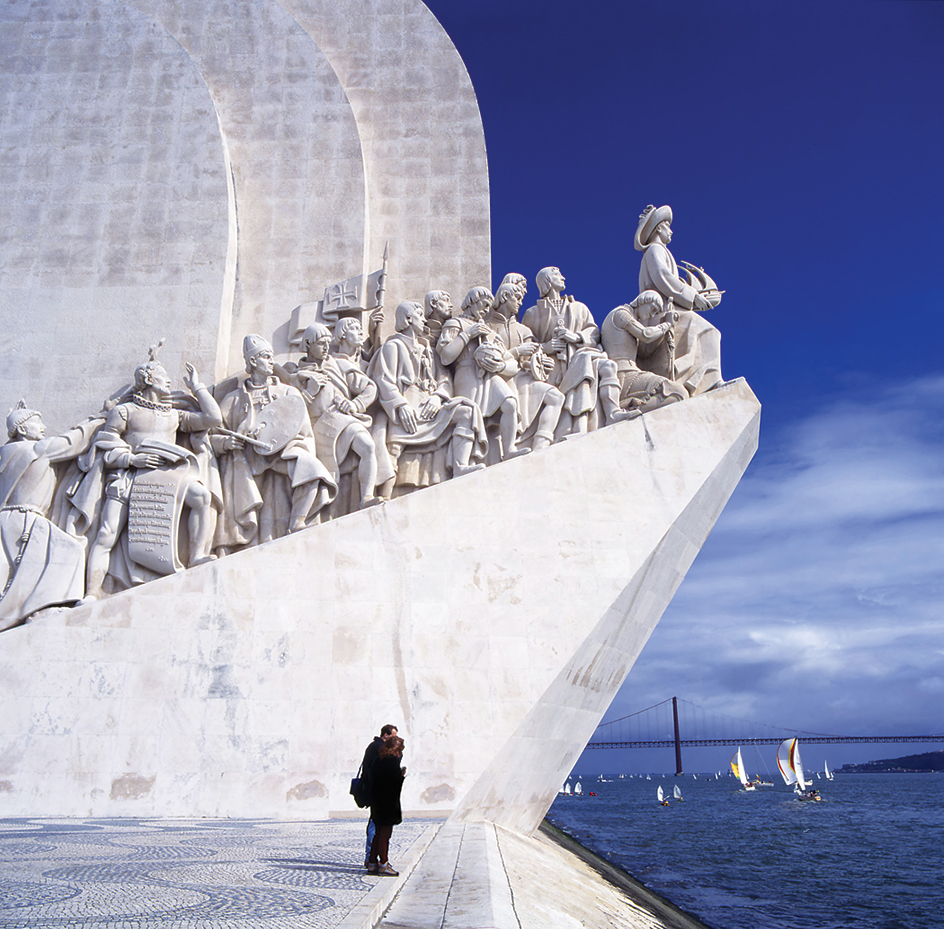
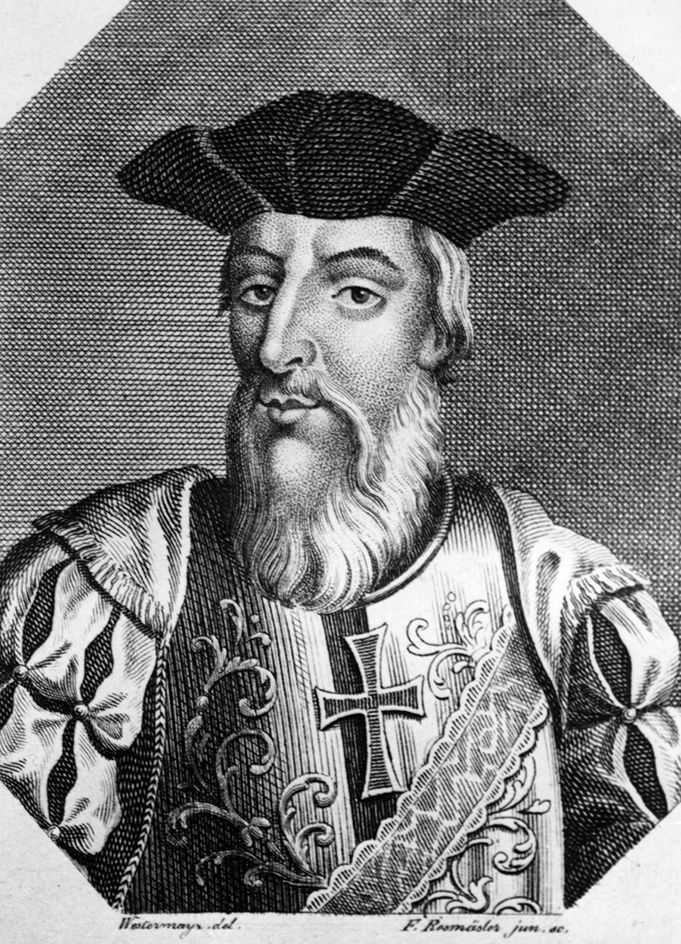
Henry the Navigator, a son of King John I, was a leading figure in Portugal’s rise as a sea power. Though he never went on a voyage of exploration himself, his studies contributed much to Portuguese marine skills. He also encouraged and sponsored many explorations.
Portuguese seamen reached the island of Madeira by 1420 and the Azores in 1431. Settlers arrived on the islands quickly. By the time of Henry’s death in 1460, the Portuguese had explored the west coast of Africa as far south as what is now Sierra Leone. In 1488, a Portuguese vessel commanded by Bartolomeu Dias sailed all the way around the Cape of Good Hope at the southern tip of Africa. The voyage marked the first time Europeans had rounded the cape.
Manuel I, called Manuel the Fortunate, became king of Portugal in 1495. Determined to increase his country’s power and importance, he decided to sponsor a daring voyage around southern Africa to Asia. Vasco da Gama undertook the voyage in 1497. He led four ships around the Cape of Good Hope and reached India in 1498. Manuel sent Pedro Álvares Cabral to follow Da Gama’s route, but Cabral drifted off course. In 1500, his fleet reached the east coast of what is now Brazil. The Portuguese also explored the coasts of Africa and the Arabian Peninsula, and Southeast Asia.
Empire and wealth.
Settlers and soldiers followed closely behind the Portuguese explorers, establishing colonies. By the mid-1500’s, Portugal controlled a vast overseas empire. It included colonies in what are now the African countries of Angola, Cabo Verde (also known as Cape Verde), Guinea-Bissau, Mozambique, and São Tomé and Príncipe; and in Brazil, Malaysia, Indonesia, and China. Portuguese traders also turned a small fishing village at Nagasaki, Japan, into a major seaport and a center of intense missionary activity.
Portugal gained great wealth from the resources of its colonies. It profited from the spice trade in Asia. It gained gold from Africa and also took part in the slave trade there. Brazil yielded such valuable items as diamonds and gold. The empire also provided Portugal with vast amounts of land. Portuguese planters in Brazil, Africa, and elsewhere raised crops that contributed to the Portuguese economy. 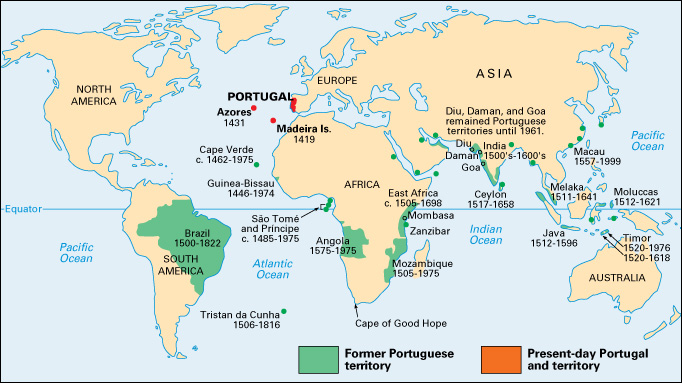
Years of decline.
Portugal held on to much of its empire well into the 1900’s. However, the country declined as an economic and world power much earlier.
As far back as the late 1500’s, there were signs that Portugal had overextended itself. The small nation found that it had too few ships, settlers, soldiers, and sailors to manage and defend its empire effectively. During the 1600’s, rival European states—including England, the Netherlands, and France—began to take over parts of the empire.
Internal policies also contributed to Portugal’s decline. The Portuguese Crown had gained enormous power, and it ruled the people with strict measures. The Roman Catholic Church carried out the Inquisition, a campaign to seek out and punish heretics (people holding beliefs different from official church teachings). Many Portuguese Christians and Jews were killed or imprisoned during the Inquisition, and thousands of Jews were expelled from the country. These developments hampered Portugal’s cultural and economic growth.
Spanish conquest.
King Sebastian of Portugal died in 1578 at the Battle of Ksar el Kebir, in Morocco. He was fighting the forces of the Moroccan ruler Abu Marwan Abd al-Malik I. Soon afterward, Portugal’s Aviz dynasty (series of rulers) ended.
King Philip II of Spain occupied Portugal in 1580. Philip added Portugal to his dominions and reigned there as Philip I. He and his heirs ruled Portugal for 60 years. During this time, they sought to increase Spanish control over Portuguese affairs. In 1640, John, Duke of Braganza, led a rebellion that drove out the Spaniards and restored Portugal’s independence. John became the first king of the House of Braganza, the last Portuguese line of monarchs. He took the title of John IV.
A brief revival.
Portugal entered a period of economic revival about 1660. Income from Brazil’s gold, diamonds, and farm products contributed greatly to this upsurge. The Methuen Treaty, a 1703 trade agreement between Portugal and England, also helped the Portuguese economy. The agreement ensured steady trade between the two countries.
The British helped Portugal maintain its national independence during the 1700’s and 1800’s. At that time, the British were enemies of the Spaniards. The British acted several times to defend Portugal from invasion or threats by Spain and Spain’s allies.
In 1807, French forces under Napoleon I invaded and conquered Portugal. But in 1811, a combined British and Portuguese force under the command of Arthur Wellesley, later the Duke of Wellington, drove out the French. The brief period of French rule marked the last time that outsiders controlled Portugal.
A weakening monarchy.
Crown Prince John of Portugal, who became King John VI in 1816, had gone to Brazil to avoid being captured by Napoleon’s armies. He returned home in 1821. By that time, a spirit of political reform had grown strong in Europe. Many Portuguese people demanded a more representative government and a limit to the power of the king. Portuguese army officers had revolted, calling for such reforms, in 1820. In 1821, John VI agreed to a constitution that provided for some representative government.
The Portuguese empire suffered a major blow in 1822 when Brazil, the wealthiest part of the empire, declared its independence. See Brazil (History). Portugal’s economy, already struggling from the years of French occupation, took decades to recover. Many Portuguese people immigrated to Brazil and the United States.
The first Portuguese republic.
Despite its new constitution, Portugal made little actual progress toward true representative government. A small group of landowning elites controlled political and economic matters, and they quarreled frequently. The monarchy declined in popularity. In 1908, revolutionaries assassinated King Carlos I and his eldest son. The king’s younger son, Manuel II, assumed the throne, but revolutionaries overthrew him in 1910. They then established Portugal as a republic.
Portugal’s first attempt at parliamentary democracy was a failure. It was marked by political instability and conflict between the state and the Roman Catholic Church. In 15 years, the country had 45 different governments. The republic’s leaders faced labor unrest and revolts by the military and civilians.
Portugal fought on the side of the Allies during World War I (1914-1918). The war costs weakened its already shaky economy.
The Salazar dictatorship.
In 1926, army officers overthrew Portugal’s civilian government. They abolished parliament, suspended civil rights, and set up a dictatorship. But the officers were unable to solve the country’s economic problems. In 1928, they chose Antonio de Oliveira Salazar, an economics expert, to serve as minister of finance. Salazar’s role soon extended far beyond financial matters. He took control of the government and began to rule as a dictator. Salazar was named prime minister in 1932.
Salazar’s government was a right-wing (conservative) dictatorship. It allowed the people few rights, and it used a secret police organization to crush the opposition. Salazar’s policies, along with economic disruption during the Great Depression of the 1930’s and World War II (1939-1945), contributed to a period of extremely slow economic growth in Portugal.
In the mid-1900’s, most European nations began granting independence to their remaining colonies. Salazar, however, refused to liberate Portugal’s colonies, in spite of demands from the United Nations and the colonies themselves. Salazar stressed the unity of Portugal and its colonies, which after 1951 were called overseas provinces.
In 1961, Indian troops forced Portugal to give up its last colonial holdings in India. At about the same time, rebels in Portugal’s African colonies of Angola, Mozambique, and Portuguese Guinea (now Guinea-Bissau) began armed struggles against their Portuguese rulers. Portugal sent troops to fight the rebels. Thousands of people on both sides were killed, and Portugal’s international reputation suffered severe damage.
A stroke ended Salazar’s public career in 1968, and Marcello Caetano took control of the government. Salazar died in 1970. Caetano attempted to soften Salazar’s harsh style of leadership, but he did not go far enough to suit many Portuguese. Caetano continued to fight against rebels in Portugal’s African colonies.
The 1974 revolution.
In 1974, midlevel military officers belonging to a group called the Armed Forces Movement overthrew the dictatorship. The movement abolished the secret police, restored rights to the people, and established a provisional government to run the country. Political parties were permitted in Portugal for the first time since the 1930’s. Communists, Socialists, and parties that favored free enterprise sought to control the new government. Although the political atmosphere was tense in 1974 and 1975, reformers achieved great changes through peaceful means.
End of the empire.
Portugal’s new government promised to give up control of its colonies. Portuguese Guinea, in Africa, gained independence as Guinea-Bissau in 1974. Angola, Cabo Verde, Mozambique, and São Tomé and Príncipe, also in Africa, gained their independence in 1975. The same year, Indonesia invaded Portuguese Timor, in Southeast Asia. The territory eventually gained its independence as East Timor in 2002. In the 1970’s, Portugal also began the process of returning Macau to China. The process was completed in 1999.
Political and economic change.
In 1975, Portugal held elections for a Constituent Assembly, which would write a new national constitution. The Constitution took effect in 1976 and established Portugal as a parliamentary democracy. Voters elected a president and members of the Assembly of the Republic, the country’s new parliament. The Portuguese military kept an advisory role until 1982.
Portugal’s government changed hands several times between 1976 and 1985. In 1987, the Social Democratic Party gained an absolute majority in parliament. Over the next eight years, the Social Democrats brought a degree of political stability to Portugal.
Portugal experienced economic growth in the second half of the 1900’s, but it also faced economic problems. The country’s continued reliance on African resources and markets limited its ability to modernize. In addition, the country struggled with the political uncertainty that followed the 1974 revolution. Portugal experienced inflation and high unemployment after the revolution. These and other circumstances brought the economy to a state of near-collapse.
Portugal entered the European Community (now the European Union) in 1986. Membership in the group helped the country’s economy modernize. Portugal shared in the general prosperity that Europe experienced in the 1990’s.
The early 2000’s.
Control of Portugal’s government has shifted mainly between the Social Democrats and the Socialists through the early decades of the 2000’s. Officials sought to address citizens’ concerns about government corruption, rising housing costs, and shortages of funding for public health services. An increase in immigration brought cultural and economic changes, as migrants came to Portugal from Brazil, Cabo Verde, and South Asia, and from other parts of Europe. Many of Portugal’s young people left the country to live and work in other European Union countries.
Portugal experienced severe economic troubles during the early 2010’s. The government enacted austerity policies, limiting spending on social services. Socialist leader António Costa became prime minister in 2015. He pledged to end the austerity measures implemented during the economic crisis.
Portugal’s dry climate makes the countryside vulnerable to drought and wildfire. Deadly and destructive wildfires burned in central Portugal in June and October 2017. More than 110 people were killed.
Prime Minister Costa resigned in 2023 after authorities revealed that his administration was the subject of a corruption investigation. A center-right alliance formed a government after elections in 2024. Luís Montenegro of the Social Democrats became prime minister.
